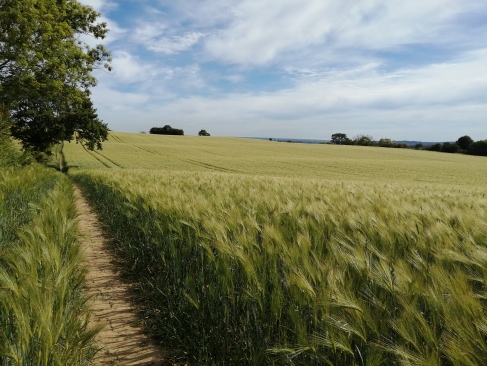Review by Fiona Sinclair, editor of Message in a Bottle poetry journal

James Kilner is a writer who manages to translate nature into a metaphor for human experience. He is a poet who clearly admires and is in tune with the seasons. Persephone is as we would expect a collection that tilts to the Greek myth that explains the contrast between winter and spring. The work is therefore split into sections Part One Persephone: Departure followed by Persephone: Homecoming each dealing with the qualities of the respective season.
The poems avoid the risk of cliche when dealing with the myth and the seasons in two ways, the first being the inclusion of the human element in the seasonal change and secondly through Kilner’s technical skill especially when using fresh imagery to define these seasons.
Kilner has an eye for detail and an economy of style that effectively creates snapshots of nature. Thus, we have the contrast between summer and autumn succinctly defined in the economical yet accurate:
‘Yesterday there were honey fields, / Yesterday there were swallows. // Today – scorched stalks. / Gulls shouting.’
The speed of seasonal change is effectively evoked here. It touches upon the liminal, cusp like states between the times. Effective use of colour is used throughout: ‘Amber, russet’. What strikes is how Kilner manages to conjure up a fresh colour palette. Moreover, his technical skill in places hints at the Keatsian. This is particularly seen in his use of rhythm and enjambment best exemplified in the lines:
‘The Earth is turning / its back on the sun.’
That so emulates the sadness and finality of the change to winter.
Yet this is not just an evocation of a season’s features. The collection is enriched and universalised by the inclusion of humans as part of the natural world. Man is both actor and observer in the poems. There is honesty in some quite dark vignettes that are season appropriate. Reinforcing the fact that we are part of the natural cycle too. Thus, in ‘Footage from a Helmet Camera’ we have a tender but also shocking study of a fatal motor cycle accident that occurs in the winter section. Such inclusion of the human element moves the collection from not simply being an homage to nature but a reminder that we too follow the seasons. ‘Footage from a Helmet Camera’ talks of not just death but how it can come upon one so quickly, ‘It’s over in three seconds’, much like the change in nature.
Other poems such as ‘Proximity’ are a study of seasonal change in the human body. In this case it is an elderly man whose illness is taking its natural course. What strikes the reader is the sad truth that whilst autumn’s demise into winter can be beautiful, ‘Mist rolls in and out’, human death is frequently disease wracked and not so lyrical, ‘trying to clear his lungs’, ‘having fallen in his room on the way for a pee’. In this Kilner is unflinchingly honest.
As winter proper takes over we have fine descriptions of the landscape. ‘Dracula Sideshow’ becomes a skilfully extended metaphor not just describing the rituals of the writing process but of the vampiric image of bats on a tree that wittily ends with the Bela Lugosi image ‘cloaks drawn about their faces’, ‘then they throw open their cloaks like coffin lids and scream’.
Yet there are darker works also that show the potential horrors of real life. Poems of murders, self-mutilation belong to the darkness of the season and link to the hellish Persephone myth that speaks of the bleaker side of the human experience.
In contrast, the ‘Homecoming’ section makes a joyful start with specific use of similes to evoke the new life attendant on spring. I was particularly struck by the simile ‘snowdrops like sheep distant on hillsides’ which manages to merge two spring-like images. Moreover, the daffodil is freshly described as ‘the eye of the daffodil waiting to open onto the world’. Colours are vividly used again with ‘a heat haze of bluebells’ and familiar bird song reinvented with ‘A riot of birds under the blue dome’ as the season gathers pace. Kilner uses yet more delightful and ingenious imagery which is deployed to present the natural world anew. Daisies are playfully imagined as ‘fried eggs in miniature’.
Yet here again the human element is introduced and reveals honestly that spring can evoke memories every bit as tender as winter. The narrator’s reveries stray from the natural world to thinking about his/her own youth and children. ‘Five A.M.’ has a writer revealing that a child is of more value than a poem: ‘This is the poem I did not write – ‘
Other narrators in poems such as ‘Patchwork’ and ‘Steps’ need to connect with ancestors and the past; spring becoming an extended metaphor for continuity and knowing one’s roots. All elements of nature linked by a cycle of life. This is a fine collection that revisits the concept of our connections to the seasons. It does well to pin the Persephone myth onto truths about the light and shade in the human experience.
Fiona Sinclair
—————————